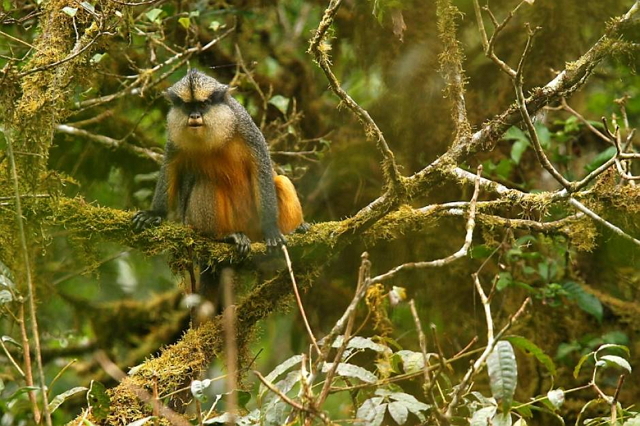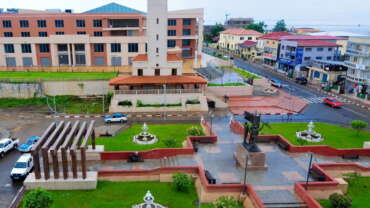Places to see in Equatorial Guinea
BIOKO ISLAND
Bioko is an island located in the Gulf of Guinea, part of Equatorial Guinea. In it is the capital, Malabo. It is 32 km from the coast of Cameroon and has an area of 2,017 square kilometers. Its population (2015) is 230,000 inhabitants. Previously, during the Spanish era, was known as Fernando Poo, the name of its discoverer in the fifteenth century, Fernão do Pó.
LUBA
On the west coast, in Boloko Bay (Luba Bay) landed the Count of Arjelejos in 1778, to take possession of the Territories of the Gulf of Guinea. Luba, the second largest city of the island of Bioko. Before independence, it was called San Carlos. Located 52 km southwest of Malabo is a picturesque port town that played an important role in the colonial history of this nation.
MOKA
Moka is the nerve center of the Bubi culture. Moka gets its name from a king who ruled the island in the nineteenth century and resided in Riaba.
CORISCO ISLAND
Corisco is a small island of Equatorial Guinea, located 29 kilometres (18 mi) southwest of the Rio Muni estuary that defines the border with Gabon. Corisco, whose name derives from the Portuguese word for lightning, has an area of just 14 km2, and its highest point is 35 metres (115 ft) above sea level. During the Iron Age (50 BC – 1400 AD) and prior to the arrival of the Portuguese, the island was densely settled.
The most important evidence of human occupation comes from the area of Nandá, near the eastern coast, where dozens of prehistoric burials have been excavated. After more than three centuries of abandonment, during which the island was sporadically visited by European sailors, Corisco was settled by the Benga people. They arrived during the second half of the 18th century attracted by the prospects of trade with the Europeans. The island was later acquired by Spain in 1843, as a result of an arrangement made by J. J. Lerena y Barry with Benga king Bonkoro I. Bonkoro I died in 1846 and was succeeded by his son Bonkoro II, but due to rivalries on the island, Bonkoro II moved to São Tomé, and Munga I ruled in Corisco 1848 to 1858, his son Munga II taking over, and meeting the explorer Manuel Iradier in the 1870s.
In general the Spanish paid little attention to Corisco. In the early part of the 20th century it was part of the administration of Elobey, Annobon, and Corisco, and postage stamps were issued under that name. It became an integral part of Equatorial Guinea upon independence. Corisco and the surrounding waters of Corisco Bay have become of interest in recent years for their oil prospects.
ANNOBON ISLAND
Annobón Province is a small province of Equatorial Guinea consisting of the island of Annobón and its associated islets in the Gulf of Guinea and Atlantic Ocean’s Cameroon Line. The provincial capital is San Antonio de Palé on the north side of the island; the other town is Mabana, formerly known as San Pedro. The roadstead is relatively safe, and some passing vessels take advantage of it in order to obtain water and fresh provisions, of which Annobon offers an abundant supply. However, there is no regular shipping service to the rest of Equatorial Guinea, and ships call as infrequently as every few months. During the 2015 census, it had 5,232 inhabitants, a small population increase from the 5,008 registered by the 2001 census. The official language is Spanish but most of the inhabitants speak a creole form of Portuguese. The island’s main industries are fishing and timbering.
BATA
Bata is a port city in the Litoral Province of Equatorial Guinea. With a 2005 estimated population of 173,046, it is the largest city in Equatorial Guinea. It lies on the Atlantic Ocean coast of Río Muni. Bata was formerly capital of Equatorial Guinea and is a transport hub and port, from which ferries sail to Malabo and Douala, while fliers can land at Bata Airport. Bata is also known for its nightlife and market.
MONGOMO
Mongomo is a town in Wele-Nzas Province in mainland Equatorial Guinea, roughly 1 km (0.62 mi) west of Gabon’s Woleu-Ntem Province. From Mongomo originated the nation’s first president Francisco Macías Nguema and of the current President Teodoro Obiang Nguema Mbasogo, hence the name the clan of Mongomo to define those belonging to his ruling clique.
OYALA
Oyala (also known as Djibloho) is a city that is being built to be the future capital of the Republic of Equatorial Guinea,replacing the city of Malabo. The planned city’s location was chosen for its easy access and benign climate. The construction of this new capital has been criticised by the political opposition to President Teodoro Obiang, the driving force behind the initiative. It is located in Wele-Nzas Province, near the town of Mengomeyén.
MBINI
Mbini is a town in Rio Muni, Equatorial Guinea, lying at the mouth of the Benito River. Mbini is the Ndowe name for Rio Muni. It is located 44 km southwest of Bata. In 2015, the population was around 25,000. The town is known for its seafood and for nearby beaches.
COGO
Cogo (also known as Kogo or Koszho, formerly Puerto Iradier) is a remote town on the Muni estuary in Rio Muni, Equatorial Guinea, lying east of Acalayong. It is known for its partly ruined Spanish Colonial architecture. It is the southernmost city of the Littoral province of Equatorial Guinea. It is located 121 km from Bata by road or 117 km when traveling through Acalayong. It is surrounded to the east and southeast by the Congüe River and to the west and southwest by the Mitemle River.
Both the Congüe and the Mitemle Rivers drain the Muni Estuary, sometimes giving the city of Cogo the shape and appearance of an island when in fact it is a peninsuala. A few meters from the port that is currently being renovated is the uninhabitable Island of Evele. Most of the population, especially the coastal population heavily rely on subsistence fishing and the Muni estuary was a major source of income as it was the gateway for passengers traveling to neighboring Gabon.
UREKA
Southern coastal village of Ureka. With a record-breaking 10,450mm of rainfall per year, it is known as the wettest place in Africa and one of the wettest in the word. In Ureka we can visit the local base camp of the Bioko Biodiversity Protection Program (BBPP) where from November to March BBPP researchers and staff are present to protect the turtle nesting sites of Ureka. In Ureka Beaches is possible to see turtles come ashore to lay their eggs in dry season.
RIO CAMPO
The Natural Reserve of Río Campo, that is a protected area with the status of a natural reserve in the Bata district of the Litoral province, in the mainland of the African country of Equatorial Guinea. One of its most outstanding features is a species of amphibian, called Rana Goliath. The nature reserve was officially created in 2000. It has an area of 335 kilometers and is located near the northern border between Equatorial Guinea and Cameroon.




